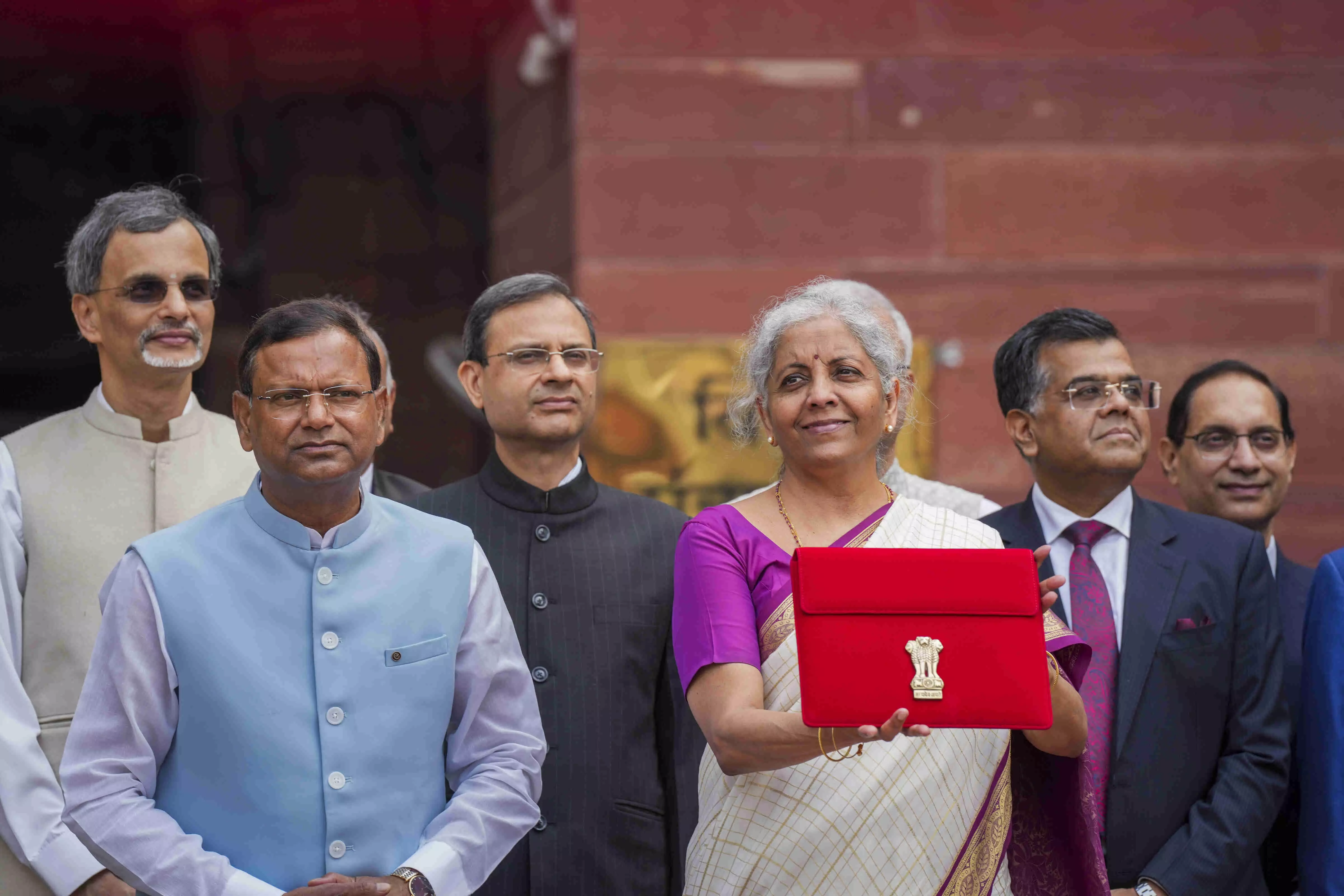A pragmatic roadmap

Union Finance Minister Nirmala Sitharaman presented her seventh consecutive Union Budget—surpassing the record of former Prime Minister Morarji Desai. The first Union Budget of the BJP-led NDA government 3.0—wherein the saffron party does not enjoy simple majority in Lok Sabha—carries evident traces of ceding to the coalition pressure by Bihar’s Janata Dal United (JDU) and Andhra Pradesh’s Telugu Desam Party (TDP), whose support is vital to hold the government intact. The extensive budgetary provisions for the two states in particular have grabbed the eyeballs.
A notable feature of this year’s Union Budget has been the government’s explicit focus on employment generation—something which certain experts see as a sign of acceptance of the thus far ignored unemployment problem. The government has introduced three schemes under Employment Linked Incentives. Apart from that, the government has decided to provide a monthly internship allowance of Rs 5,000—along with a one-time allowance of Rs 6,000—for students to earn 12-month exposure in top 500 companies. While the internship programme appears to be a good idea, it is uncertain how far the piecemeal Employment Linked Incentives will help solve India’s galloping unemployment crisis! The government’s focus on MSMEs, manufacturing and services sectors is also intended to boost employment generation.
Recognising the multifaceted role of the MSME sector in the economy, the Union Budget seeks to refine the Credit Guarantee Scheme, devise new assessment models for MSME credit eligibility, and ease collateral requirements, apart from assuring credit support to MSMEs during their stress period. Under the PM MUDRA Yojana, the loan amount in the third category, i.e., Tarun Loans, has been doubled to Rs 20 lakh for units that have paid their previous dues. Also, the turnover criteria for availing Trade Receivables Discounting System (TReDS) platform has been reduced from Rs 500 crore to Rs 250 crore—a move that will help incorporate more CPSEs on the platform. Furthermore, establishing SIDBI branches in MSME clusters and promoting e-commerce export hubs in PPP mode will likely enhance market access and competitiveness. These are indeed impressive strides towards strengthening the crucial sector.
Capital expenditure has turned out to be a proven track for the government to facilitate economic growth. The Union Finance Minister has earmarked a staggering Rs 11,11,111 crore for capital expenditure—amounting to 3.4 per cent of the GDP. Apart from investment by the Central Government, the Union Budget has envisaged state support by provisioning Rs 1.5 lakh crore for long-term interest-free loans. The government also seeks to ensure private participation through viability gap funding and a market-based financing framework. Notably, again, a large chunk of infrastructure projects are centred in Bihar and Andhra Pradesh.
The Union Budget also plans to transform cities into growth hubs through economic and transit planning. It has proposed creative redevelopment of brownfield cities and transit-oriented development plans for 14 large cities. A plan of Rs 10 lakh crore has been proposed to ensure housing for 1 crore urban poor and middle class individuals, with Central assistance of Rs 2.2 lakh crore, over the next five years. The Central government, with state support, also seeks to revamp stamp duties, especially for properties purchased by women. The Budget has also made significant allocations in the realm of energy security and transition, along with innovation, R&D, and next-generation reforms.
On the taxation front, slabs have been changed for the New Tax Regime, meaning those who have opted for it will have to pay lower taxes. Furthermore, the standard deductions for salaried employees have been raised from Rs 50,000 to Rs 75,000. Also, the Angel tax now stands removed. Another notable takeaway from the Budget is the reduction of corporate tax for foreign companies from 40 per cent to 35 per cent, which might spur investment in the future.
If an outline around the Budget has to be drawn, fiscal prudence would be the reference point. The budgetary target for fiscal deficit for FY25 has been set at 4.9 per cent—lower than the 5.1 per cent target in the Interim Budget. The government is inching closer to the 4.5 per cent target for the next fiscal. With an apparent aim to reduce external borrowing by boosting domestic capacity, in the limited fiscal space the government had, it has managed to set its priorities right. Indeed, the market didn’t respond positively to the Budget initially, but the decline was largely on account of the announced hike in STT (Securities Transaction Tax) on F&O (Futures and Options) securities. The Budget is pragmatic in many aspects, and factors in the challenges of the present times. But the omission of the mention of the railways budget is something very baffling.



